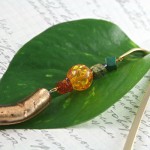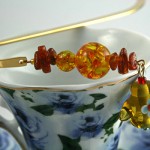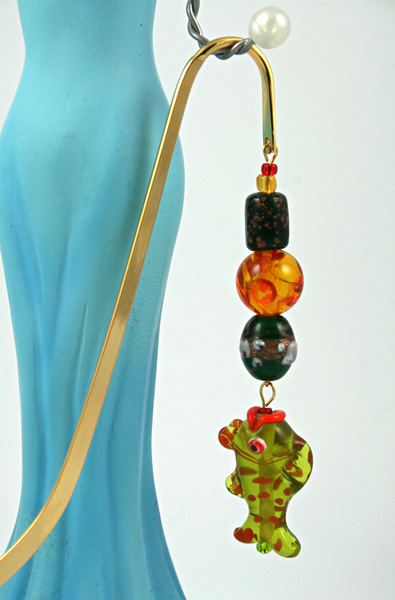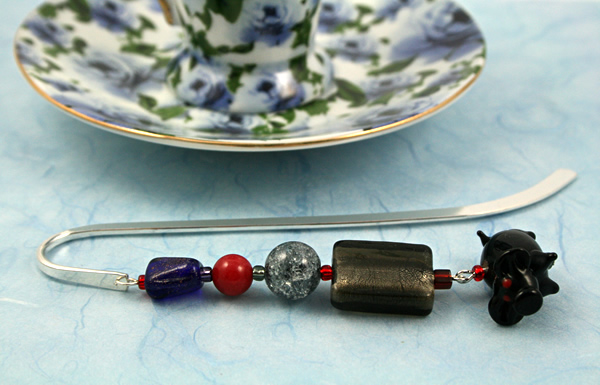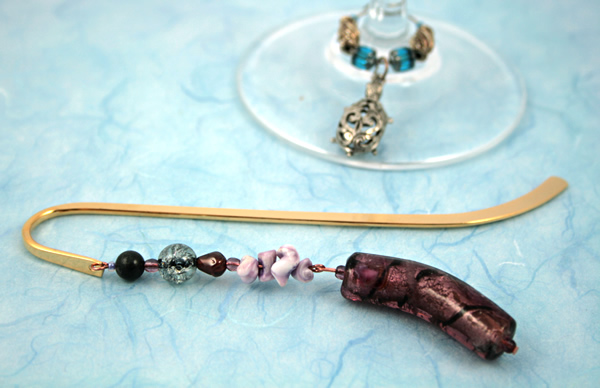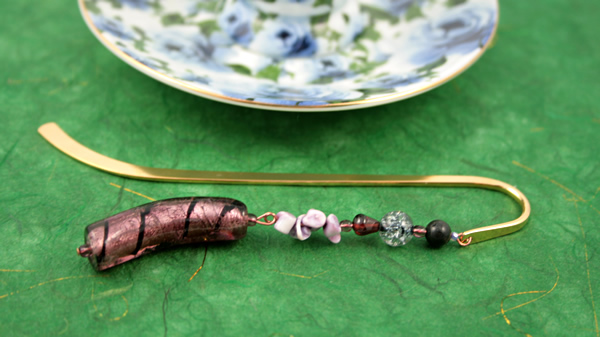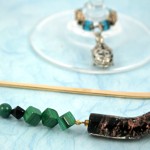Tag: gold
Beading: Green Universe bookmark, gold-plated
Beading: Royal Heart Key bookmark, gold-plated
Beading: Amber Tea bookmark, gold-plated
Beading: Green Apple bookmark, gold-plated
Available for purchase on Etsy: http://www.etsy.com/listing/87822954/green-apple-bead-bookmark-gold-plated
Beading: Troll Treasures bookmark, gold-plated
Available for purchase on Etsy: http://www.etsy.com/listing/87649710/troll-treasures-bead-bookmark-gold
Beading: Chinese Teapot bookmark, gold-plated
Beading: Fish of Green Meadows bookmark, gold-plated
Available for purchase on Etsy: http://www.etsy.com/listing/86355356/fish-of-green-meadows-bead-bookmark-gold
Beading: Cube of Sunlight bookmark, gold-plated
Beading: Green Lollipop bookmark, gold-plated
Available for purchase on Etsy: http://www.etsy.com/listing/86255276/green-lollipop-bead-bookmark-gold-plated
Beading: The Black Pig of Doom bookmark, silver-plated
Available for purchase on Etsy: http://www.etsy.com/listing/86157797/black-pig-of-doom-bead-bookmark-silver
Puzzle: The Little Veterinary
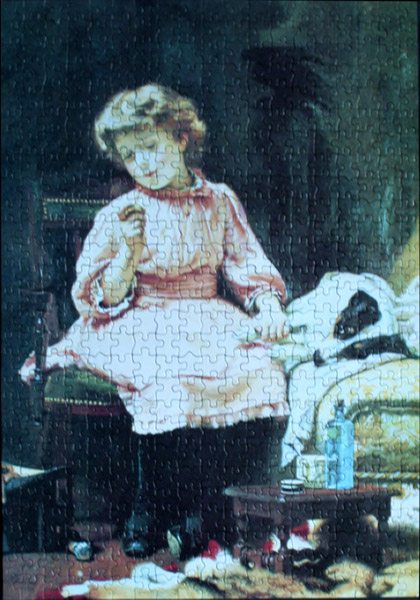
Size: 500 pieces
Dimensions: 35.2cm x 50.5cm
Artist: The MB Puzzle failed to indicate the artist
Producer: MB Puzzle, Elite series, #C4589-3
Notes: A veterinarian (American English) or a veterinary surgeon (British English), often shortened to vet, is a person who treats animals and a practitioner of veterinary medicine. The word comes from the Latin veterinae meaning “working animals”. “Veterinarian” was first used in print by Thomas Browne in 1646.
In many respects a veterinarian is similar to a pediatrician. Animals cannot talk like human beings, and much of the clinical history is obtained from the owner or client as a pediatrician would obtain the medical history from a child’s parents. [Wiki]
Puzzle: Birds of the Season, 4 of 4, by Greg Giordano
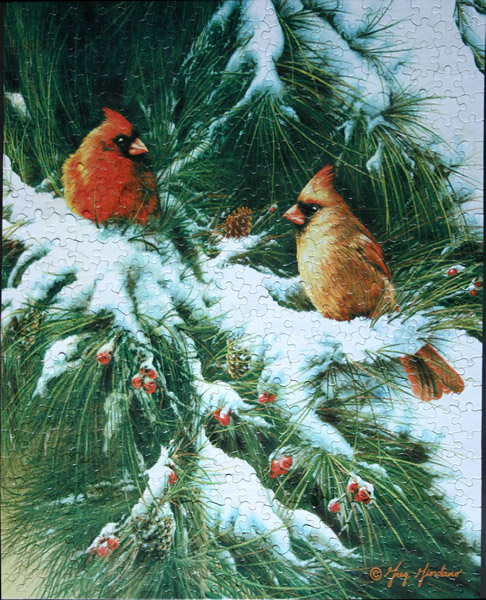
Size: 500 pieces
Dimensions: 40.64cm x 50.8cm
Producer: Karmin International, Birds of the Season series
Artist: Greg Giordano
Puzzle: One of the 4 puzzles in the box (first, second, third, fourth).
Notes: Birds (class Aves) are feathered, winged, bipedal, endothermic (warm-blooded), egg-laying, vertebrate animals. Around 10,000 living species makes them the most speciose class of tetrapod vertebrates. They inhabit ecosystems across the globe, from the Arctic to the Antarctic. Extant birds range in size from the 5 cm Bee Hummingbird to the 2.75 m Ostrich.
Modern birds are characterised by feathers, a beak with no teeth, the laying of hard-shelled eggs, a high metabolic rate, a four-chambered heart, and a lightweight but strong skeleton. All living species of birds have wings—the now extinct flightless Moa of New Zealand was the only exception. Wings are evolved forelimbs, and most bird species can fly, with some exceptions, including ratites, penguins, and a number of diverse endemic island species. Birds also have unique digestive and respiratory systems that are highly adapted for flight. Some birds, especially corvids and parrots, are among the most intelligent animal species; a number of bird species have been observed manufacturing and using tools, and many social species exhibit cultural transmission of knowledge across generations. [Wiki]
Puzzle: Cortona Tuscany, Italy

Size: 500 pieces
Dimensions: 48.4cm x 35.5cm
Producer: Sure-Lox, Wonderful World series
Notes: Cortona is a town and comune in the province of Arezzo, in Tuscany, Italy. It is the main cultural and artistic center of the Val di Chiana after Arezzo.
Originally an Umbrian city, it was conquered and enlarged by the Etruscans, who called it Curtun. Cortona eventually became a Roman colony under the name Corito. During the barbarian invasions of the 553, Cortona was sacked and destroyed by the Goths. Cortona became a Ghibellinian city state in the 13th century, with its own currency. From 1325 to 1409 the Ranieri-Casali family successfully ruled the town. After being conquered by Ladislaus of Naples in 1409, Cortona was sold to the Medici in 1411. In 1737, the senior branch of the Medici line went extinct and Cortona came under the authority of the House of Lorraine. Following the Italian Wars of Independence, Tuscany – Cortona included – became part of the Kingdom of Italy. [Wiki]
Puzzle: Aspen Glow Arctic Wolf by John Seerey-Lester

Size: 500 pieces
Dimensions: 48.26 cm x 35.56 cm
Producer: The Canadian Group, Sure-Lox, Keepsakes series, Reusable gift box with magnetic closure, #442220-5
Artist: John Seerey-Lester
Notes: The Arctic Wolf (Canis lupus arctos), also called Polar Wolf or White Wolf, is a species of mammal of the family Canidae, and a subspecies of the Gray Wolf. Arctic Wolves inhabit the Canadian Arctic, Alaska and the northern parts of Greenland.
They have lived in North America for more than two million years. When they find a den, they make a couple of chambers for food and young. Arctic wolves live on the islands of the Canadian Arctic, and the north coast of Greenland, roughly north of 70° North latitude. The Arctic Wolf is the only subspecies of the Gray Wolf that still can be found over the whole of its original range, largely because, in their natural habitat, they rarely encounter humans.
Their habitat is extremely harsh and remote, and few scientists venture into that world during the long, dark winter – even the vast majority of Inuit live further south than the Arctic wolf. As a result, the details of their lives through much of the year are virtually unknown. [Wiki]
Puzzle: You better be good!

Size: 1000+ pieces (oversized)
Dimensions: 68.58cm x 88.9cm
Producer: SunsOut, #19208
Artist: Nicky Boehme – Ms. Boehme studied Technical Art at The Oakland Art Institute in California, and went on to become the Art Director of several national art agencies. It was at this time that she received numerous awards as an illustrator and graphic designer.
She has many feature articles on her art in national magazines and trade publications. Her art has been published internationally in several books. Nicky is an artist member of “The National Society of Marine Artists,” and “The Oil Painters of America.” [ArtRev.com site]
Notes: The Christmas tree, also known as a Yule tree, is a decorated evergreen coniferous tree, real or artificial, and a tradition associated with the celebration of Christmas. The tradition of decorating an evergreen tree at Christmas started in Livonia and Germany in the 16th century. The Christmas tree is traditionally brought into the home and decorated with Christmas lights (originally candles), ornaments, garlands, tinsel, and candy canes during the days around Christmas. [Wiki]










